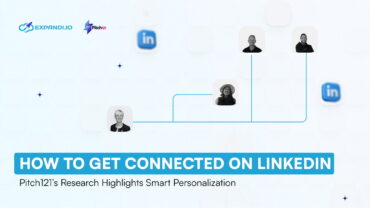How Belkins Scales LinkedIn Outreach with Expandi (Without Losing the Human Touch)

At Belkins, we didn’t start with LinkedIn.
Like most agencies, we began with cold emails. It worked — for a while. But then reply rates started slipping. Inboxes got crowded. Messages went unread. And worst of all? We had no real way of warming up a conversation before asking for time on someone’s calendar.
So we started looking for a better way. A more human way.
Our SDR team began experimenting with LinkedIn — at first manually, just testing connection requests, soft engagement, and custom messages. The results were immediate. More replies, higher-quality conversations, and a sense that prospects were actually interested.
At some moment, we realized LinkedIn wasn’t just a backup channel. It was the channel. But scaling it came with challenges: account limits, personalization demands, and compliance headaches.
That’s where Expandi came in.
As our 200+ existing clients gradually moved to our omnichannel approach, we needed someone who could bring structure, clarity, and tactical depth to one of our most important outreach channels.
Anastasia, who managed our team of 40+ SDRs, stepped in. Over the years of grinding through the ins and outs of LinkedIn, she became our internal subject-matter expert who we rely on to drive our LinkedIn strategy. Every week, SDRs come to her with the same questions: What works now? Should I follow up? What should I say in the comment? She reviews patterns across accounts, studies what’s converting, and updates the playbook in real time.
I’ve asked her to support me in writing this article, so you’ll see me quoting her here and there. Also, she provided most of the examples you’ll find below.
In this post, we’ll break down how Belkins uses LinkedIn as a high-performing outbound channel and how Expandi helps us scale it without losing the human touch. We’ll share our outreach framework, real examples, benchmarks, and lessons learned.
Key Takeaways
- Prioritize high-intent prospects. You have only 400-500 connections per month on LinkedIn, you need to prioritize whom to contact. Relevant connection signals include profile views, event attendance, content engagements, and more.
- Build multi-touch sequences that feel human. Include personalization, create multiple entry points, and match the prospect’s communication style for best results.
- Scale personalization without burning out SDRs. Use smart personalization triggers, focus on relevant pain points, and follow up without being pushy.
- Сreate content that attracts inbound leads. For multiple touchpoints-based outreach and role-based access, and automation that doesn’t feel robotic – use Expandi.
Why do we prioritize LinkedIn here at Belkins?
We’ve been actively using LinkedIn for both our own campaigns and for our clients within the past three years.
“LinkedIn sits between email and cold calls: more personal than email, less intrusive than calling, and built for connection.”
— Anastasia, SDR team lead at Belkins
Just a few benefits and improvements we noticed during this time:
- Better targeting: You can pre-qualify leads beyond title or company — SSI, interests, activity, and mutual connections all matter.
- Softer entry: Connection requests and content engagement feel more natural than cold emails.
- Higher intent: People expect professional outreach on LinkedIn. They are more open to building relationships.
- Long-term value: Even if there’s no immediate reply, connecting on LinkedIn builds a warm pipeline for future conversations — something cold emails or calls often can’t achieve.
- Personal brand amplification: If our client actively builds their personal brand, the outreach becomes even more effective. Consistent content creates accumulated trust, leaving prospects with almost no chance to ignore the connection (we offer complex LinkedIn lead generation services to help build this).
- Higher SDR motivation: Visible actions like profile views and replies create momentum for our reps.
“For many of our clients, we set a clear benchmark — 25% of monthly KPIs should come from LinkedIn. That means it’s not just a social channel, it’s a measurable revenue stream. Comments, DMs, profile views — they all tie back to the pipeline.”
— Anastasia, SDR team lead at Belkins
Also, we and most of our clients faced similar issues:
| Challenge | Why it matters |
| Low reply rates on cold channels | Cold email gets 5.1% of responses, on average. LinkedIn hits 10.3%+ for us. |
| LinkedIn limitations | Volume restrictions require smarter, not harder, outreach. This shifts the focus from mass campaigns to human touch. |
| Scaling personalization | Generic messages kill results. Personalization boosts ROI by 35–50%. Expandi Messenger campaigns achieve 16.86% reply rates. |
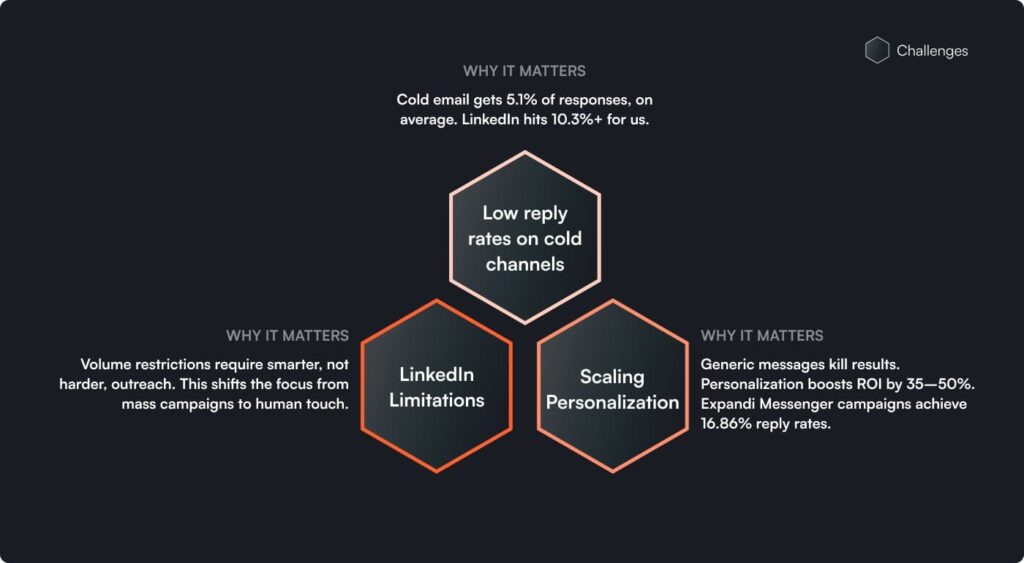
Though LinkedIn’s limitations and need for scaling seemed to contradict each other, here’s how we managed to balance the quality and the quantity.
How we maximize LinkedIn outreach ROI
Step 0: Know your numbers
“There’s no one-size-fits-all approach to LinkedIn outreach. Each industry, each client, and each project has unique dynamics. If you want to get real results from LinkedIn, you have to calculate your numbers based on your own preconditions.”
— Anastasia, SDR team lead at Belkins
Here are some general things to consider:
- One LinkedIn account typically can send around 400 connection requests per month.
- Mobile connections (from the app) can give an extra 100–200 connection requests monthly.
If your offer is highly targeted — for example, a non-profit, a leadership tool, or a niche B2B solution — then one LinkedIn account might be enough to meet your appointment goals.
But if you’re operating in a highly competitive or crowded market, you’ll likely need more sendouts to reach your targets. And the only safe way to scale on LinkedIn without risking your account is by adding more profiles.
Example:
For one of our clients in the computer and network security niche, we increased the number of active LinkedIn accounts from 1 to 4. The number of appointments booked per month grew from a consistent 0–1 to a stable 2–3.
Step 1: Prioritize high-intent prospects
Mass outreach doesn’t scale anymore.
Having just 400–500 connections available monthly, you need to filter out whom to contact. That’s why we built our own lead prioritization system for LinkedIn campaigns.
“We don’t just add more accounts and flood LinkedIn with average-quality leads, we optimize for quality first. What we love about Expandi is that its advanced filtering tools help us easily identify and sort out engaged, high-intent leads.”
— Anastasia, SDR team lead at Belkins
Once we review and finalize the lead list, we then focus on behavioral signals to find leads who are already active.
Signals we use:
- Profile views
- Event attendance
- Relevant group memberships
- Content engagements
- Recent job changes or promotions
- Company milestones (funding or expansion)
- Connections with competitors or industry influencers
- Recent activity on other channels (email or ad clicks, call answers, website visits, etc.)
We apply this to lead tiering and sendout limits.
Here’s the impact of our prioritization system within the first few months:
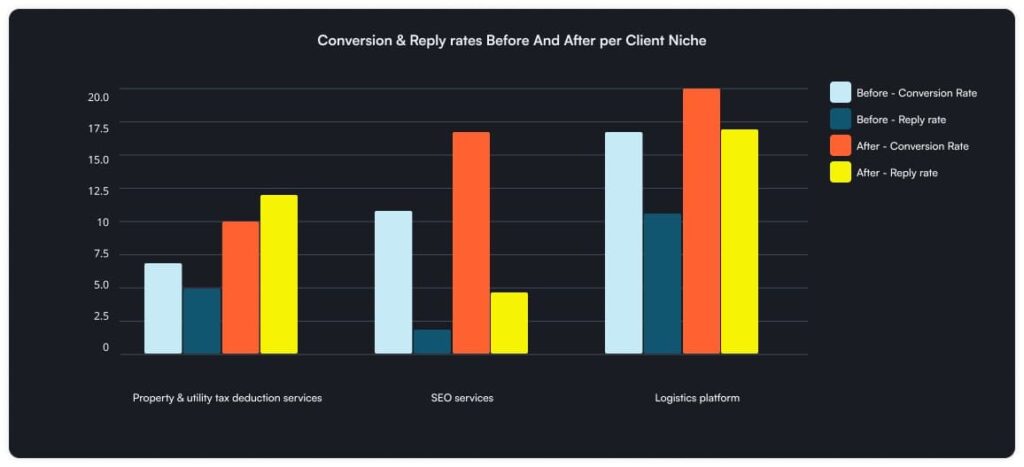
In some cases, the numbers grew twice as much as before and kept increasing in the coming months.
Signal-based LinkedIn outreach examples
Before we dive into outreach tactics, I asked Anastasia to dig into our best-performing industries and share what’s working on the ground — straight from our SDRs.
She pulled live campaign examples and winning angles across hundreds of LinkedIn messages. These are the patterns that consistently drive replies, across different niches and buyer types.
Industry: Software development services
Signal 1: Content engagements (likes, comments, shares)
- Opportunity: CTOs engaging with posts about scaling software teams often indicate growing tech needs.
- Comment example:
“Loved your post on scaling backend architecture, Alex! We’ve recently helped a few startups handle similar challenges during growth phases — curious how your team approaches it?”
- DM example:
“Hey Alex, really appreciated your take on backend scaling. At {{Company}}, we specialize in helping companies like {{Prospect’s company}} scale their dev teams without growing pains. Happy to share a few case studies if you’re interested!”
Signal 2: Company milestones (expansion)
- Opportunity: New regional office launches signal growing tech demands.
- Comment example:
- “Congratulations on opening your new branch in Austin, Alex! Wishing {{Prospect’s company}} even bigger success!”
- DM example:
“Hi Alex, congrats on {{Prospect’s company}} Austin launch! When companies expand geographically, scaling tech infrastructure usually follows. We’ve supported teams during similar transitions and would be happy to share insights.”
Industry: Video production company
Signal 1: Company milestones (product launches or campaigns)
- Opportunity: New product launches often need professional video content.
- Comment example:
“Huge congrats on launching {{Prospect’s Company}} smartwatch, Julia! Excited to see it disrupt the wearables market.”
- DM example:
“Hi Julia, congratulations again on {{Company}} launch! We’ve helped brands like {{a client from the industry}} create compelling product launch videos — would love to explore how we could add momentum to your next campaign.”
Signal 2: Content engagements (marketing & branding topics)
- Opportunity: Active branded content distribution hints at openness to new creative formats.
- Comment example:
“Great thoughts on brand storytelling, Julia! I especially loved your point about emotional connection with customers.”
- DM example:
“Hi Julia, I really enjoyed your perspective on branding. At {{Company}}, we help brands like {{a client from the industry}} tell their stories through cinematic video — happy to share ideas if you’re exploring new formats.”
Industry: Crowdfunding platform for startups
Signal 1: Content engagements (startup & funding topics)
- Opportunity: Engagement with funding advice shows fundraising readiness.
- Comment example:
“Spot-on take on early-stage fundraising, Tom! Really resonated with your point about building traction pre-launch.”
- DM example:
“Hey Tom, loved your thoughts on early-stage funding! At {{Company}}, we help startups like {{a client from the industry}} not just hit, but exceed their crowdfunding goals. Would love to brainstorm with you!”
Signal 2: Connections with industry influencers or competitors
- Opportunity: Building networks with VCs or competitor platforms suggests fundraising interest.
- DM example:
“Hi Tom, I noticed you’re connecting with several leaders from {{a client from the industry}}. {{Company}} specializes in helping startups like {{Prospect’s company}} successfully run equity crowdfunding rounds. Happy to share a few best practices!”
Industry: Workplace management solutions (HR tech, ops tools)
Signal 1: Job changes & promotions (HR/operations roles)
- Opportunity: New HR Directors often look to optimize processes early.
- DM example:
“Hi Anna, congratulations on your new role as Head of People Operations at {{Prospect’s company}}! New leadership often means fresh ideas for workspace management — I’d love to share how {{Company}} is helping companies simplify onboarding and employee engagement.”
Signal 2: Content engagements (HR tech & employee experience topics)
- Opportunity: Interest in employee engagement content points to openness to tech improvements.
- Comment example:
“Couldn’t agree more with your point on hybrid workplace engagement, Anna! Personalization really is the key.”
- DM example:
“Hi Anna, loved your take on hybrid engagement strategies. At {{Company}}, we help fast-growing teams like {{a client from the industry}} optimize employee experience with seamless management tools. Would love to chat if you’re exploring upgrades!”
Step 2: Build multitouch sequences that feel human
Engaging with prospects via 2–3 channels increases your chances of booking a meeting by 63%. We uncovered this after analyzing hundreds of single-channel vs. omnichannel campaigns across different industries.
At Belkins, we don’t just rely on LinkedIn. We combine it with email and calls, following a proven engagement workflow that balances automation with personalization.
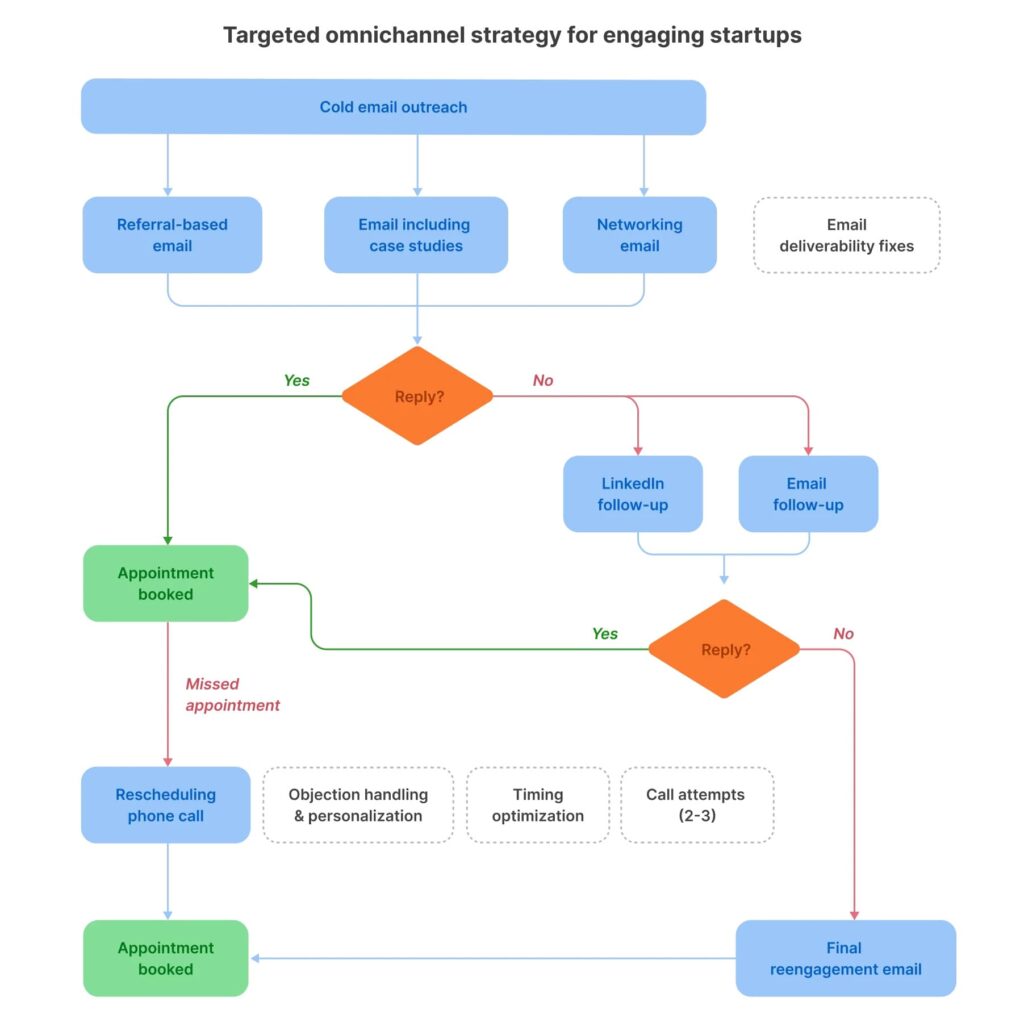
“What makes this flow so effective for our SDR team is how it balances consistency and creativity. Everyone follows the same core steps, but there’s room to personalize — and that’s where the magic happens.”
— Anastasia, SDR team lead at Belkins
This approach has helped us generate more qualified conversations by:
- Creating multiple entry points for the lead
- Reducing drop-off from channel fatigue
- Matching the prospect’s preferred communication style
To make LinkedIn outreach effective within this mix, we follow four golden rules:
- Engage softly: Visit the prospect’s profile, like a post, or leave a thoughtful comment.
- Send a contextual connection request: Mention something relevant (a post, group, or trigger event).
- Drop a value-first message: Don’t pitch. Share an insight, case study, or relevant content.
- Follow up strategically: Base timing and content on interaction signals (not arbitrary delays).
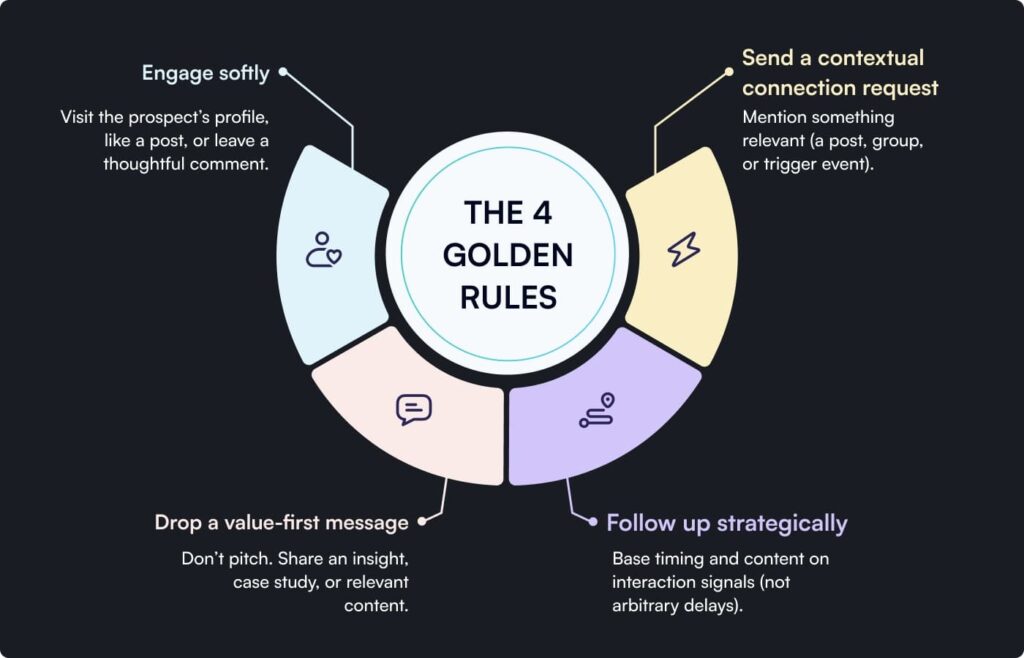
Belkins’ strategy: Balancing automation and personalization
We use automation only to handle structure and timing, not content.
Personalization still comes from our SDRs, who:
- Customize first lines based on recent LinkedIn activity
- Reference mutual connections or shared interests
- Tailor the CTA based on industry and lead tier
Even follow-ups are lightly personalized, pulling context from previous touches or the lead’s behavior.
Follow-up example:
“Hey Marcus, I saw your team recently expanded into APAC. We’ve helped SaaS companies with similar transitions. Happy to share some insights if you’re open to it.”
Expandi’s role: Automation with control
“When running outreach across 100+ LinkedIn accounts, you need a tool that’s both powerful and safe. Expandi stood out to us as a clear leader in the LinkedIn outreach space — offering the flexibility to manage complex campaigns, the analytics to scale what works, and the safety features to keep client accounts protected.”
— Anastasia, SDR team lead at Belkins
Expandi enables us to:
- Automate multitouch cadences across LinkedIn + email
- Stay compliant with LinkedIn’s rules (no spammy blasts)
- Simulate natural behavior with smart sequences (Builder campaigns mimic human actions)
- Split campaigns by ICP, signal, or priority
- Trigger follow-ups based on replies, not time delays alone

“Expandi gives us the flexibility to run highly personalized campaigns at scale without burning out our SDRs or risking account safety.”
— Anastasia, SDR team lead at Belkins
Step 3: Scale personalization without burning out SDRs
We’ve all seen it: a message that starts with “Hi {{FirstName}}, I help businesses like yours…” and ends up ignored.
That’s not personalization. That’s automation pretending to be clever.
“At Belkins, we’ve made it a rule: if it feels templated, we don’t send it. Instead, our SDRs treat every touchpoint as a mini opportunity to earn trust. And that starts with knowing what kind of access they have to a lead’s profile.”
— Anastasia, SDR team lead at Belkins
Going deep with full profile access
When we have full visibility, we can do what real humans do:
- Comment and react to posts by the prospect or their company. We engage meaningfully, not just with emojis.
- Explore the prospect’s network and interact with colleagues they often tag or engage with.
- Track profile viewers and prioritize “hot” leads based on who’s already shown interest.
- Send personalized voice messages (yes, we test AI-generated ones too).
- Join shared groups or webinars to create the context for outreach.
- Review competitors’ audiences to identify strategic overlaps.
- Publish and interact: posting regular content helps attract and warm up the right people.
These actions give us hooks for messages that sound like they came from a real colleague, not a cold stranger.
With limited profile access: Still personal, just smarter
Even with limited access (like what you get via Expandi), we still find ways to personalize:
- Analyze recent activity and response patterns
- Look into the company’s recent wins, news, or hiring trends
- Use niche or role-based insights to craft relevance
It’s not about what you can’t see. It’s about using what you do see better than anyone else.
Personalization triggers that actually work
We split personalization into two categories:
- Personal (rarely used). These are things like birthdays or family milestones. We don’t use them unless they fit naturally.
- Professional (our bread and butter). This is where we go all in.
Here are five ways we personalize outreach professionally:
- Focusing on pain points (using value proposition form). We often use the pain points a client shares with us to open up a conversation.
“I noticed companies in your industry often struggle with [pain point]. How are you addressing this challenge?”
- Monitoring the prospect’s content and overall activity. If they post or comment, we listen.
“I saw your comment on [post]. That’s such an interesting perspective! How do you think [topic] will shape the industry?”
- Analyzing the prospect’s role (done right). We look past job titles and try to understand actual responsibilities. Different companies structure roles differently, so a job title alone isn’t enough.
“I see you’re responsible for [function]. Does [related responsibility] fall under your scope as well?”
- Recognizing achievements. Everyone likes a little attention. Promotions, speaking gigs, big wins — we celebrate all of them.
“Congrats on [achievement]! It’s amazing that you’ve been recognized for [project]. What’s next for the team?”
- Mentioning company context. From product launches to funding rounds, we stay on top of the news.
“Congrats to your team on launching [product]! It looks incredibly promising. How are you planning to scale this initiative?”
Bottom line?
Personalization isn’t just a tactic. It’s a respect play.
And with Expandi, we can personalize at scale. Campaigns can include dynamic fields, behavior-based triggers, and AI-suggested content. That means our SDRs can keep every message relevant, without getting overwhelmed with manual work.
The result? Higher reply rates. Shorter sales cycles. And leads that actually want to talk to us.
Step 4: Smart follow-ups (without being pushy)
“Follow-ups matter. Campaigns with 2+ follow-ups see 4.05% higher reply rates. That’s too big to ignore.”
— Anastasia, SDR team lead at Belkins
But follow-ups only work when they don’t feel like follow-ups. That means no robotic reminders, no “just checking in,” and definitely no guilt trips.
Here are the rules we live by to keep it human:
- Craft short, light messages. Avoid long paragraphs — 1–2 sentences will do perfectly.
- Ask, don’t pitch. Show genuine curiosity about the prospect’s work and goals.
- Reference the last message or action. Context always creates that sense of familiarity and proves you care.
- Use casual, human language. A few abbreviations or soft slang (where appropriate) will make conversations feel natural, not scripted.
- Try different formats. Stand out by adding relevant images, useful content links, etc.
Follow-up examples:
- “Hi Tom, following up here in case this slipped through. Happy to share a quick resource if you’re exploring ways to boost your launch outreach: [link].”
- “Hey Julia, just saw your team announced a new partnership — congrats! Curious if you’re looking for additional support as you scale.”
- “Hey Sam, totally get that timing might be off. Just let me know if this becomes a priority down the line. Happy to stay in touch.”
We also track interaction signals to time our follow-ups better:
- Did they accept the connection but not respond?
- Have they viewed our profile since the last message?
- Are they posting actively this week?
Instead of waiting X days and pushing the same CTA, we adapt based on behavior.
Expandi takes the guesswork out of follow-ups through AI-suggested timing based on the recipient’s interaction patterns.
That means our SDRs can:
- Spend less time deciding when to follow up
- Never send a message that feels “off”
We use Expandi to map out the follow-up cadence across LinkedIn — and we let the data drive the schedule.
It’s personalization + automation, all the way through.
Step 5: Build a personal brand that attracts inbound
When we onboard a new client, one of the first things we check is their LinkedIn presence. Because no matter how great your outreach is, it only works if the profile behind the message feels real, credible, and active.
“We’ve seen it time and time again: inactive profiles kill momentum. So for almost every client, we insist on building a content rhythm. It’s not just about thought leadership. It’s about social proof, trust, and long-term inbound deal flow.”
— Anastasia, SDR team lead at Belkins
Here’s what our content strategy typically includes:
- Weekly thought leadership posts tailored to the client’s ICP
- Use of different content types — questionnaires, carousels, pure text to evoke the discussions
- Clean, branded visuals that reflect authority and professionalism
- Commentary on trending topics that spark meaningful engagement
- Positioning the client as a go-to expert in their niche
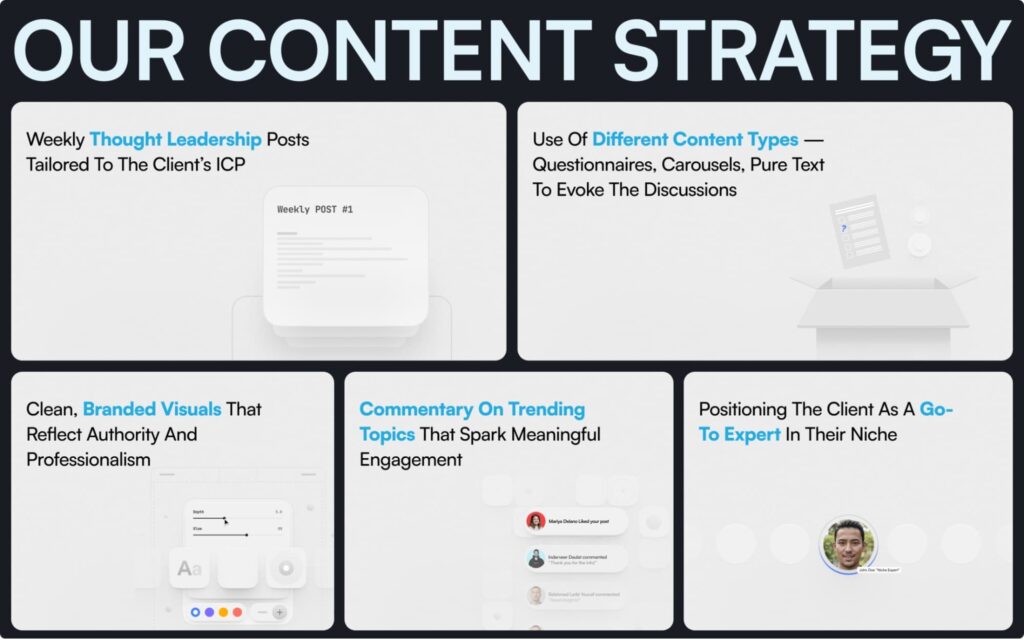
We also pair organic growth with LinkedIn paid ads if extra reach is needed. This hybrid approach accelerates visibility and warms up future outreach targets.
Example:
One of our clients works in talent acquisition for people with disabilities. It’s an amazing mission, but their niche doesn’t typically generate viral traction.
We launched a simple but consistent LinkedIn content strategy: two posts per week, focused on industry insights, challenges, and success stories.
After just 2.5 weeks, one post caught fire:
- Over 15,000 engagements
- 50 comments
- 100 reposts
That single post led to two highly relevant prospects reaching out to start conversations. We’re now nurturing both through personalized follow-up campaigns.
So yes, posting boosts safety. But more than that, it builds a brand that makes people want to engage.
Think of your LinkedIn content as the landing page for your outreach. If it looks stale, your messages won’t land. If it looks legit, prospects will lean in.
Why Expandi is our go-to tool
When we realized LinkedIn was going to be an important channel, we knew we couldn’t scale it with spreadsheets and browser extensions. We needed something built for real teams, real volume, and real results.
That’s when Expandi became a game-changer.
It wasn’t just another automation tool. It was built for agencies like us.
Here’s why it stuck:
1. Multiple touchpoints
LinkedIn is powerful. But sometimes, a message lands better in the inbox. Expandi lets us run LinkedIn + email cadences in a single campaign. This means:
- Seamless follow-ups across both channels
- Higher response rates through varied entry points
- Smarter outreach that adapts to how people prefer to engage

2. Role-based access
Managing outreach across multiple clients and SDRs is messy without structure. Expandi’s roles and permissions system helps us:
- Assign specific campaigns to specific team members
- Manage client accounts safely and separately
- Keep everything compliant without micromanaging
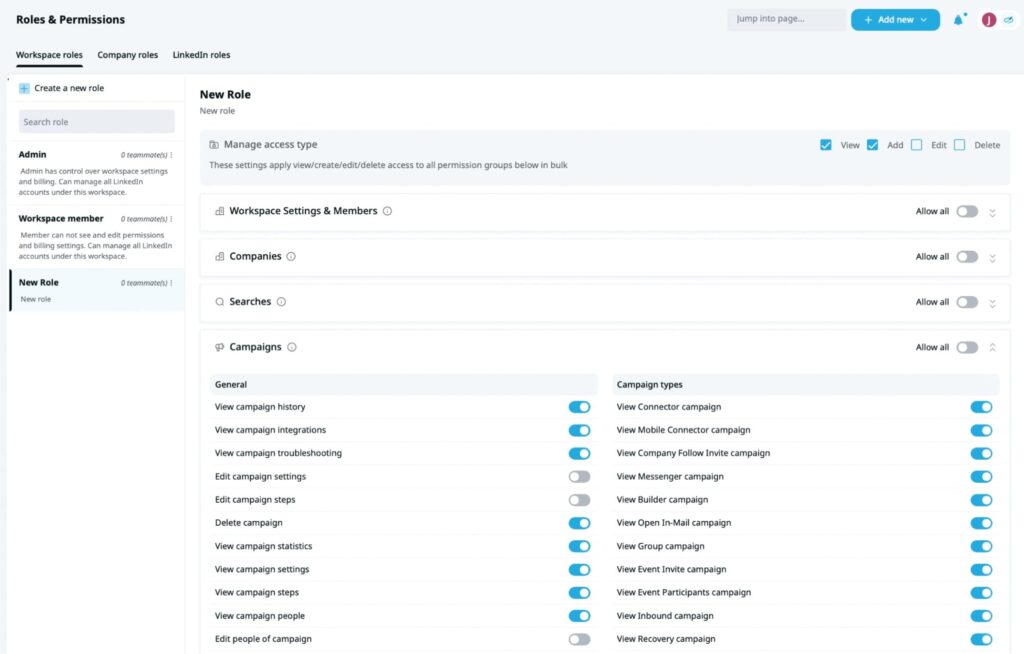
3. Automation that doesn’t feel robotic
Expandi powers our smart sequences, behavioral triggers, and personalization variables — without crossing the line into spam.
It helps us:
- Simulate human-like actions (via Builder campaigns)
- Trigger follow-ups based on actual interaction (not just timers)
- Pull in personalization data to keep outreach feeling real

4. Built-in safety and scalability
LinkedIn’s limitations aren’t a problem if you work with the platform, not against it. Expandi helps us:
- Keep accounts safe with human-like actions and throttling
- Scale outreach across dozens of profiles without raising flags
- Monitor campaign performance in real time with visual dashboards
In short: Expandi lets us do what we do best — build quality conversations at scale.
Without it, we’d be buried in tabs and manual tasks. With it, we focus on strategy, message quality, and outcomes
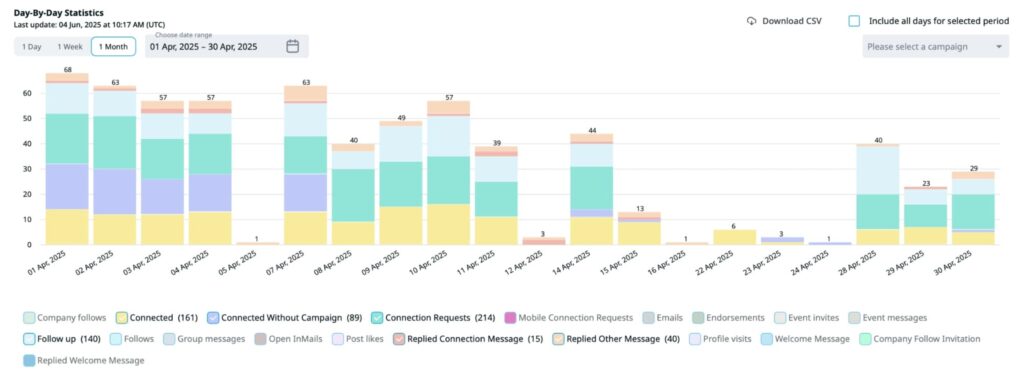
A few final thoughts
LinkedIn outreach works quite well. But only when it’s done intentionally.
At Belkins, we don’t chase volume. We scale personalization, prioritize warm leads, and use tools like Expandi to work smarter.
If you’re a lead gen agency looking to get real results from LinkedIn, the strategy is simple:
Stop sending more. Start sending smarter.
Ready to rethink your LinkedIn strategy? Try out Expandi for scaling your LinkedIn outreach and replicate Belkins’s success for yourself.
You’ve made it all the way down here, take the final step

